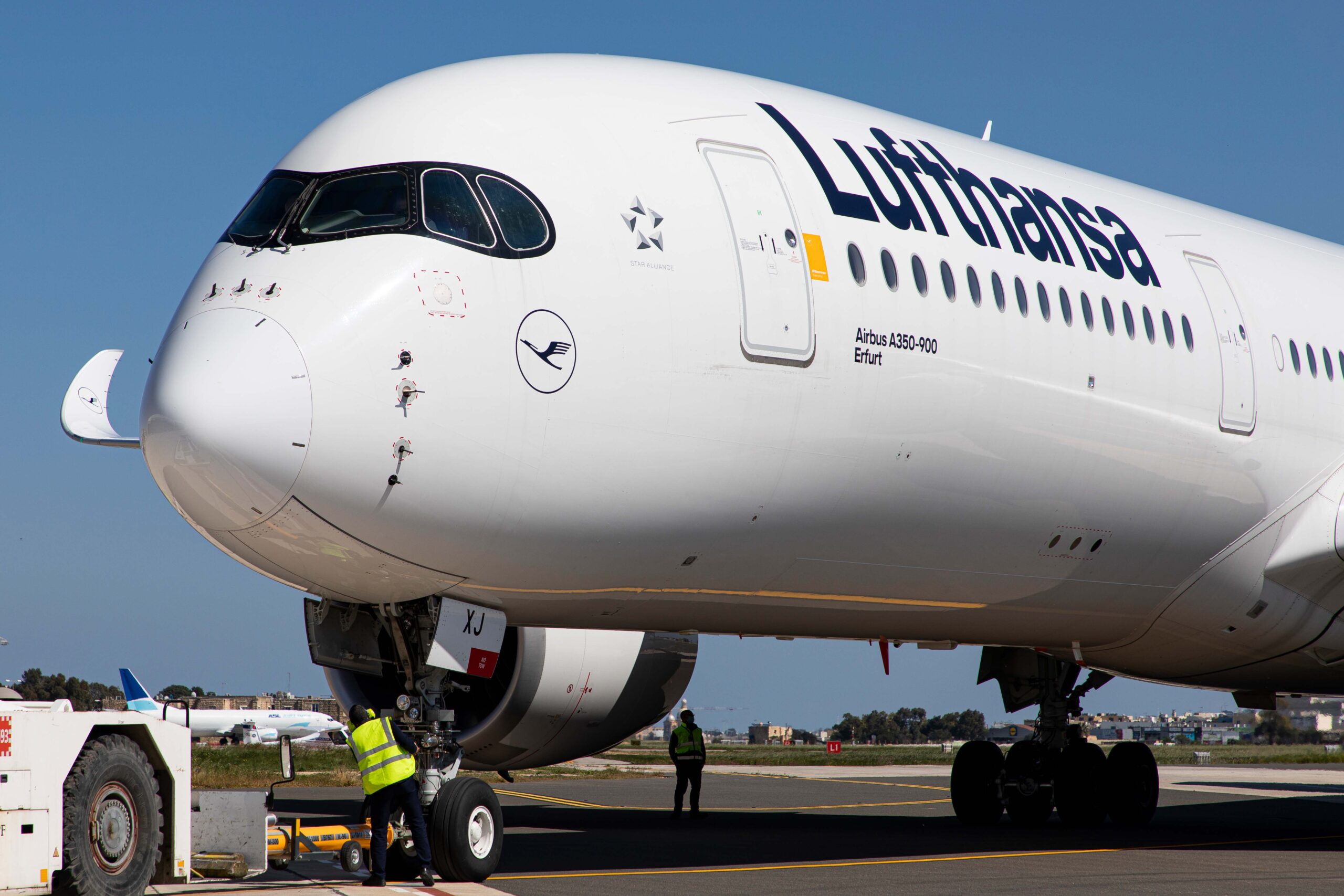As part of a new project to help create a greener aviation industry, German airline Lufthansa has converted an Airbus A350-900 into a specialised climate research plane.
The Head of Corporate Responsibility at the Lufthansa Group, Annette Mann, said the move was something ‘very special’ for the airline’s transition to greener operations. They plan for the aircraft to make its debut flight in late 2021.
Measuring data in the atmosphere
Lufthansa’s will adapt an A350-900 to collect data that helps scientists view changing weather patterns. Gathering these data measurements is essential for assisting assessments of pre-existing climate models – vital for predictions of Earth’s changing climate.
The A350-900 will contain automated scientific apparatus capable of measuring 100 different trace gases, aerosol and cloud parameters at altitudes between nine to twelve km. This required different aircraft conversions, including fitting an air and particle intake system under the belly.
Converting an A350 for this project began four years ago at Lufthansa’s Technik hangar in Malta. Lufthansa has stated they chose to participate because measuring climate parameters using a high-altitude aircraft creates more accuracy than ground-based or satellite systems.
The project called the “Civil Aircraft for the Regular Investigation of the atmosphere Based on an Instrument Container” (CARIBIC) also involved installing a research laboratory onboard the aircraft. Lufthansa has referred to the laboratory as the CARIBIC measurement laboratory.
Mann said that Lufthansa was enthusiastic about adopting CARIBIC on the A350-900, stating that,
“In this way, we can continue to support climate and atmospheric research in its important task on long-haul routes. We are helping to ensure that particularly important climate-relevant parameters are collected just on that altitude where the atmospheric greenhouse effects is largely generated”.
A team effort
Although, Lufthansa hasn’t been the only participant on the project. Over ten different companies contributed to the development and planning phases and will be eager to watch the A350-900 take to the skies. This includes Airbus, Dynatec and the Karlsruhe Institute of Technology, who were vital in bringing CARIBIC to fruition.
The coordinator of IAGOS-CARIBIC, Dr Andreas Zahn of the Karlsruhe Institute of Technology, stated that,
“The CARIBIC aircraft is indeed unique in the world” and that, “No other observation system worldwide, neither on the ground nor on satellite, can provide such high-resolution multi-parameter data from the free atmosphere”.
But perhaps the most critical feature in this project was between Lufthansa and Airbus. Lufthansa has previously retrofitted climate instruments onto jets. However, this project marks their first time doing so with an Airbus A350-900.
The German airline giant stated that they chose the A350-900 for its reduced fuel burn. All A350 models feature a wing design with a focus on efficiency and a carbon-fibre reinforced plastic fuselage. The Head of Aviation Environmental Roadmap at Airbus, Simone Rauer, described the work as a “significant step in ensuring continuation of the industry’s support to climate research”.
Climate-focused initiatives have featured heavily on the Lufthansa group’s 2021 agenda, including establishing a new corporate responsibility unit earlier this year. We can expect more green initiatives to follow, including a “green hydrogen” investment and potentially more options for passengers to offset co2 emissions.
Words by Jonathan Ritchie


0 Comments